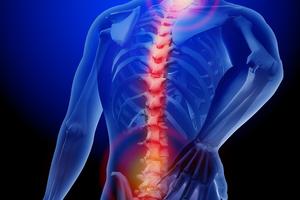Principal Office Located at 1424 Gables Court, Plano, TX 75075
Call Today For a Free Case Evaluation
What Types of Spine Disorders Qualify for Social Security Disability?
 There are multiple different types of health conditions that may cause a person to be disabled. Among these, conditions that result in severe back pain can be very difficult to deal with. Injuries that affect the muscles in the back or the bones, nerves, and other tissues in the spinal cord can affect a person’s ability to stand, walk, reach for and carry objects, bend over, or even sit in one place for an extended period of time. Because of these issues, those who suffer from back injuries or disorders affecting the spine will often struggle to hold down steady employment, since they may be unable to perform work-related tasks and maintain a consistent pace of work throughout the day. Fortunately, people with these conditions may be able to receive Social Security disability benefits. However, they will need to understand the qualifications that they will need to meet to show that their back pain or spinal injuries are severe enough to be considered a disability.
There are multiple different types of health conditions that may cause a person to be disabled. Among these, conditions that result in severe back pain can be very difficult to deal with. Injuries that affect the muscles in the back or the bones, nerves, and other tissues in the spinal cord can affect a person’s ability to stand, walk, reach for and carry objects, bend over, or even sit in one place for an extended period of time. Because of these issues, those who suffer from back injuries or disorders affecting the spine will often struggle to hold down steady employment, since they may be unable to perform work-related tasks and maintain a consistent pace of work throughout the day. Fortunately, people with these conditions may be able to receive Social Security disability benefits. However, they will need to understand the qualifications that they will need to meet to show that their back pain or spinal injuries are severe enough to be considered a disability.
Requirements for Musculoskeletal Disorders Affecting the Back and Spine
Many back injuries will fall into the category of musculoskeletal disorders of the back and spine that affect nerve roots, including by placing compression on the spinal cord or otherwise causing these nerves to be inflamed or irritated. These disorders may include degenerative disc disease, herniated discs, spinal osteoarthritis, or dislocated or fractured vertebrae. Social Security will consider this type of disorder to be a disability if all of the following are true:
-
The person experiences symptoms radiating from the point where nerves have been affected, including pain, tingling sensations, or muscle fatigue.
-
Physical examinations or diagnostic tests show that a person experiences neurological signs radiating from the affected nerves. These include muscle weakness, decreased sensation, and decreased tendon reflexes.
-
Diagnostic imaging such as X-rays, CT scans, and MRIs show that nerves in the cervical, lumbar, or sacral spine have been affected.
-
The person has experienced physical limitations affecting musculoskeletal functions that have lasted or are expected to last for at least one year. This can be demonstrated by a documented medical need for two-handed assistive devices such as canes, crutches, a walker, or a wheelchair; an inability to use both arms or hands to perform work-related tasks; or an inability to use one arm or hand combined with the documented medical need for a one-handed assistive device such as a cane.
If a person does not fully meet all of these requirements, they may still be able to receive disability benefits. They may do so by demonstrating that their condition is serious enough to prevent them from performing work they have done in the past or finding gainful employment that fits within their physical limitations.
Contact Our Dallas SSD Benefits Lawyers for Back Injuries
While spinal cord injuries and other conditions that cause back pain may seem like obvious disabilities, those who suffer from these issues will need to demonstrate that their conditions are severe and long-lasting while affecting their ability to perform work. At The Law Offices of Coats & Todd, we can help you show that your back injuries or related issues meet the requirements to be considered a disability, and we will work to ensure that you will be able to receive the disability benefits you need. Contact our Dallas County Social Security disability claim attorneys at 972-671-9922 to schedule a free case evaluation today.
Source:
https://www.ssa.gov/disability/professionals/bluebook/1.00-Musculoskeletal-Adult.htm

 972-671-9922
972-671-9922





